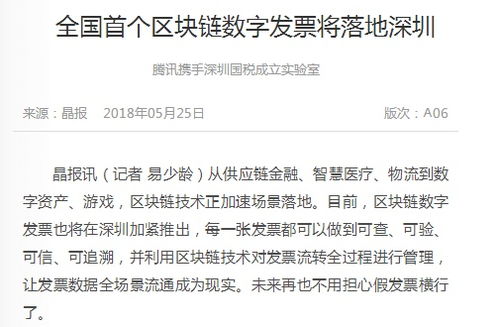**Title: How to Verify the Recipient of a Blockchain Invoice**
In the realm of blockchain technology, verifying the recipient of an invoice is crucial for ensuring transparency, security, and accuracy in financial transactions. Blockchain-based invoicing systems offer unique advantages such as immutability, transparency, and decentralization, making them an ideal choice for businesses seeking to streamline their invoicing processes while enhancing trust and security. Here's a comprehensive guide on how to verify the recipient of a blockchain invoice:
### Understanding Blockchain Invoicing
Blockchain invoicing involves creating, sending, receiving, and managing invoices using blockchain technology. Unlike traditional invoicing systems, blockchain-based solutions offer a distributed ledger that records all transactions in a secure and transparent manner. Each transaction is cryptographically linked to the previous one, ensuring immutability and integrity.
### Steps to Verify the Recipient of a Blockchain Invoice
1. **Access the Blockchain Network**: To verify the recipient of a blockchain invoice, you need access to the blockchain network where the invoice was generated and recorded. This typically involves using a blockchain explorer or accessing a blockchain-based invoicing platform.
2. **Retrieve the Invoice Information**: Obtain the necessary information related to the invoice you want to verify. This includes the invoice number, transaction ID (TXID), sender's address, recipient's address, invoice amount, and any other relevant details.
3. **Identify the Recipient's Address**: In blockchain invoicing, each participant is assigned a unique digital address, known as a public key or wallet address. This address serves as the recipient's identifier in the blockchain network.
4. **Verify the Transaction Details**: Use the provided transaction ID (TXID) or invoice number to locate the transaction associated with the invoice. Verify that the transaction details match the information provided in the invoice, including the sender's and recipient's addresses, invoice amount, and timestamp.
5. **Cross-Check Recipient's Address**: Double-check the recipient's address listed on the invoice with the address recorded on the blockchain. Ensure that they match exactly to confirm that the invoice was indeed sent to the intended recipient.
6. **Confirm Transaction Status**: Check the status of the transaction to ensure that it has been successfully processed and confirmed on the blockchain network. This helps verify the authenticity of the invoice and confirms that the payment has been received by the intended recipient.
7. **Review Transaction History**: Optionally, review the transaction history associated with the recipient's address to gain further insights into their invoicing activity and transaction patterns. This can help detect any discrepancies or fraudulent activities.
8. **Utilize Smart Contracts (Optional)**: In some blockchain-based invoicing systems, smart contracts are used to automate invoicing processes and enforce payment terms. If smart contracts are employed, verify that the terms and conditions specified in the contract align with the invoice details.
### Best Practices and Considerations
- **Ensure Data Privacy**: While blockchain offers transparency, it's essential to safeguard sensitive information such as invoice amounts and recipient details from unauthorized access.
- **Authenticate Sender's Identity**: Implement mechanisms to verify the identity of the sender to prevent invoice fraud and phishing attacks.
- **Stay Informed About Regulatory Requirements**: Keep abreast of regulatory guidelines and compliance requirements related to blockchain-based invoicing, especially concerning data protection and financial regulations.
- **Employ Multi-Signature Wallets (For Businesses)**: Consider using multi-signature wallets for business transactions, requiring multiple parties to authorize and verify invoice payments, thereby enhancing security and accountability.
- **Regularly Audit and Monitor Transactions**: Conduct periodic audits and monitoring of blockchain transactions to detect and mitigate any anomalies or suspicious activities.
### Conclusion
Verifying the recipient of a blockchain invoice involves accessing the blockchain network, retrieving invoice information, confirming transaction details, and cross-checking recipient addresses. By following these steps and adopting best practices, businesses can ensure the authenticity, transparency, and security of their invoicing processes in the blockchain ecosystem.

标签: 区块链发票怎样打明细
区块链发票在哪里查询
区块链发票查询平台
版权声明:除非特别标注,否则均为本站原创文章,转载时请以链接形式注明文章出处。

